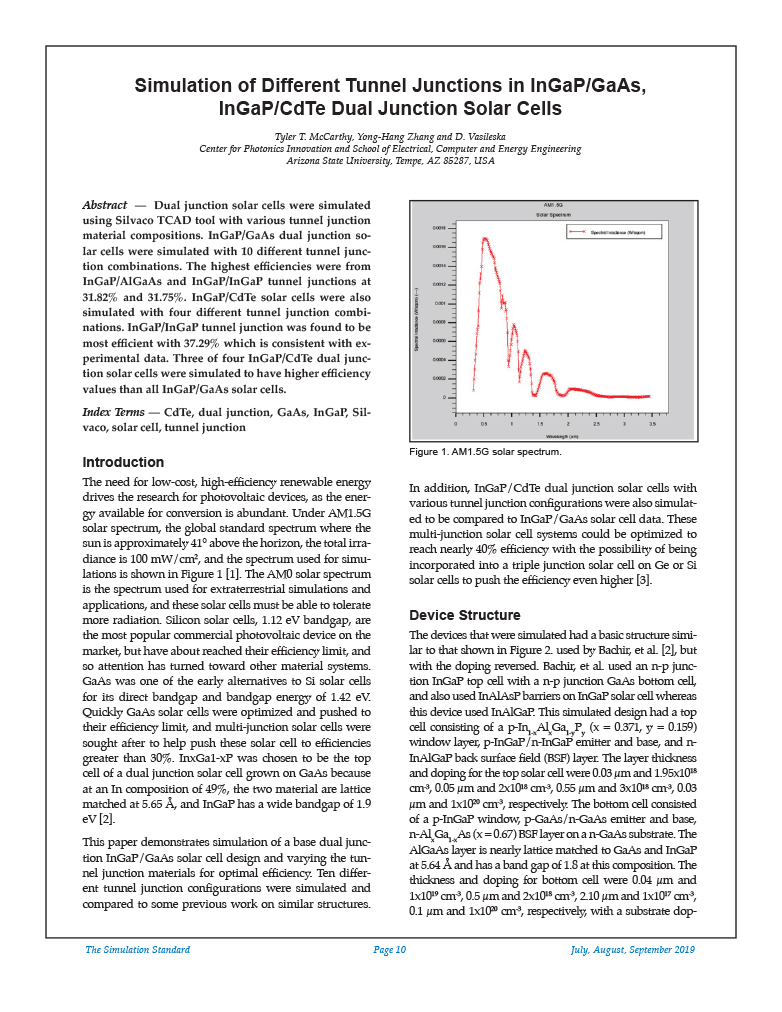Simulation of Different Tunnel Junctions in InGaP/GaAs, InGaP/CdTe Dual Junction Solar Cells
Tyler T. McCarthy, Yong-Hang Zhang and D. Vasileska
Center for Photonics Innovation and School of Electrical, Computer and Energy Engineering
Arizona State University, Tempe, AZ 85287, USA
Abstract — Dual junction solar cells were simulated using Silvaco TCAD tool with various tunnel junction material compositions. InGaP/GaAs dual junction solar cells were simulated with 10 different tunnel junction combinations. The highest efficiencies were from InGaP/AlGaAs and InGaP/InGaP tunnel junctions at 31.82% and 31.75%. InGaP/CdTe solar cells were also simulated with four different tunnel junction combinations. InGaP/InGaP tunnel junction was found to be most efficient with 37.29% which is consistent with experimental data. Three of four InGaP/CdTe dual junction solar cells were simulated to have higher efficiency values than all InGaP/GaAs solar cells.
Index Terms — CdTe, dual junction, GaAs, InGaP, Silvaco, solar cell, tunnel junction
Introduction
The need for low-cost, high-efficiency renewable energy drives the research for photovoltaic devices, as the energy available for conversion is abundant. Under AM1.5G solar spectrum, the global standard spectrum where the sun is approximately 41° above the horizon, the total irradiance is 100 mW/cm2, and the spectrum used for simulations is shown in Figure 1 [1]. The AM0 solar spectrum is the spectrum used for extraterrestrial simulations and applications, and these solar cells must be able to tolerate more radiation. Silicon solar cells, 1.12 eV bandgap, are the most popular commercial photovoltaic device on the market, but have about reached their efficiency limit, and so attention has turned toward other material systems. GaAs was one of the early alternatives to Si solar cells for its direct bandgap and bandgap energy of 1.42 eV. Quickly GaAs solar cells were optimized and pushed to their efficiency limit, and multi-junction solar cells were sought after to help push these solar cell to efficiencies greater than 30%. InxGa1-xP was chosen to be the top cell of a dual junction solar cell grown on GaAs because at an In composition of 49%, the two material are lattice matched at 5.65 Å, and InGaP has a wide bandgap of 1.9 eV [2].



